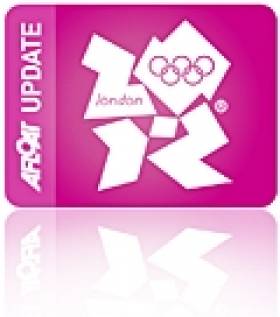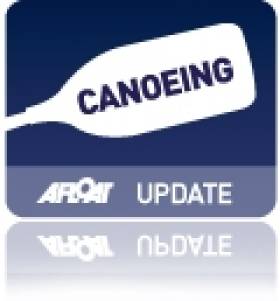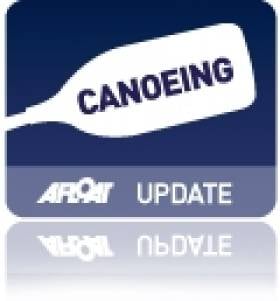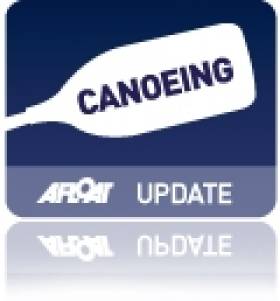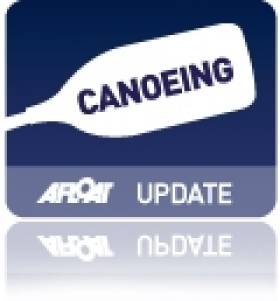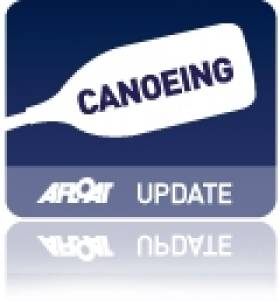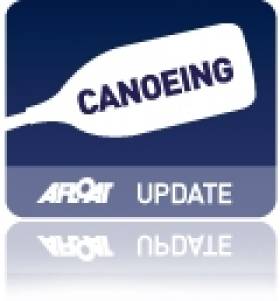Displaying items by tag: canoeing
Keep Up With Ireland's Aquatic Olympians On TV
#OLYMPICS ON TV - Sailing action continues for another week at the London Olympics, with BBC Three and BBC HD being the best places to catch the race action on TV.
First place Annalise Murphy will be racing her Laser Radial this afternoon and tomorrow - races that sadly will not be televised, according to our sources - but her class' medal race scheduled for Monday 6 August at 2pm, with live coverage expected on RTÉ and BBC.
In the 49er, Matt McGovern and Ryan Seaton are half-way through their race schedule and will be in action in three races today 3 August, with two apiece on Sunday 5 August and Monday 6 August, and with the medal race in their class set for next Wednesday 8 August at 2pm.
In the 470, Scott Flanigan and Ger Owens have just got their campaign underway and will be racing this afternoon, tomorrow 4 August, Monday 6 August and Tuesday 7 August, with the medal race sheduled for Thursday 9 August at 2pm on BBC One.
James Espey in the Laser will also be in action today and tomorrow from 1pm, with the medal race in his class set for Monday 6 August at 2pm.
Meanwhile, David Burrows and Peter O'Leary will be looking to put their recent disqualification behind them this afternoon, with the medal race in their Star class to be contested on Sunday 5 August at 2pm on BBC Three.
In canoeing, Ireland's last medal hopes rest with Andrzej Jezierski in the men's C1 200m. The Polish native will be in action in the first heat of the day on Friday 10 August at 9.50am, with the semi-finals set for 11.15am should he qualify, and the finals taking place on Saturday 11 August at 9.45am.
In rowing, Sanita Puspure easily outclassed the field in her semi-final race, crossing the line 10 seconds ahead of her closest rival, and the Latvian heads into tomorrow's finals in lane 3 of the C group at 10.20am on BBC One and RTÉ Two.
Craig's Hopes End in K1 Canoe Slalom Final
#canoe – Antrim woman Hannah Craig's hopes of a medal in the K1 slalom canoe final ended this afternoon when she hit three gates on the way down in her bid for glory.
Craig was first into the water in the final but hitting gates five, nine and 16 cost her a six-second penalty and she finished with a time of 127.36 well outside of the medal times.
Rheinisch Penalty Costs Ireland in Semi Final
It all went wrong for Eoin Rheinisch in the semi final of the canoe slalom at the Olympic Games today. Surprisingly good times set by the early starters in the K1 at the Lee Valley course put pressure on the 32 year old Kildareman; but he was still in the mix to make the final until gates 18 and 19 which come after a big drop. He came through gate 18 but was carried too far and could not make it back to negotiate 19 (an upstream gate). He incurred a 50-second penalty and lost his chance of making the top 10 and progressing. He said afterwards that he was devastated and that the back of his boat had clipped the side of the course and he could not recover.
Follow Irish Olympic Sailing Action On TV Next Week
#OLYMPICS ON TV - The Irish Olympic team's campaign finally kicks off at London 2012 this weekend with action across sailing, rowing and canoe slalom events - and Afloat.ie will keep you up to date on where you can catch the action live on TV over the next seven days.
In sailing, the first week's competition begins at noon on Sunday 29 July, when Peter O'Leary and David Burrows start their Star campaign. BBC Three is the best place to find live sailing coverage throughout the afternoon and most other days.
On Monday 30 July, Annalise Murphy begins her challenge for an Olympic medal with live Laser Radial action during the afternoon on RTÉ Two, while BBC Three continues its comprehensive coverage - no doubt featuring James Espey in the Laser.
More action in the Men's Laser and Star plus the Women's Laser Radial can be found on BBC Three on Tuesday 31 July, while Wednesday 1 August sees the first competition from Matt McGovern and Ryan Seaton in the 49er (plus sailing in all over classes bar the Star).
The 470 pair of Scott Flanigan and Ger Owens will get afloat on Thursday 2 August, with coverage of their class as well as the Men's 49er and Star throughout the afternoon on BBC Three.
In other Olympic highlights, Eoin Rheinisch begins his challenge in the Men's K1 canoe slalom heats on RTE Two from 1.30pm on Sunday 29 July, while Hannah Craig will be in the spotlight in the Women's K1 heats from 2pm on Monday 30 July.
Men's K1 semi-final action on Wednedsday 1 August will be broadcast live on BBC Three, Eurosport and Sky 3D, with the K1 final - which could decide Ireland's first aquatic medal - set for 3.15pm on BBC Three.
Thursday 2 August brings the Women's K1 semi-finals on RTE Two from 2pm, with the finals scheduled from 3.55pm on BBC Three.
Meanwhile in rowing, Ireland's sole competitor Sanita Puspure starts her Women's Single Sculls campaign on Saturday morning.
RTE Two and BBC One will have coverage of the repechage from 11am on Sunday 29 July, with quarter-finals on the morning of Tuesday 31 July (RTE Two) and the classifications and semi-finals on BBC One from 11am on Thursday 2 August.
Junior Summer Camps with Canoeing Ireland
#CANOEING - With Ireland's schoolkids well into their summer holidays, a great way to keep them amused is to get them enrolled in Canoeing Ireland's junior summer camps.
Junior camps run every week at Canoeing Ireland's purpose-built training centre at Strawberry Beds from Monday to Friday over five two-hour sessions from 10am-12om or 2pm-4pm, teaching basic canoeing skills mixed with lots of fun and games.
The camps cost just €60 per child per week and are suitable for all. No experience is necessary, and all equipment can be provided.
For more information contact Canoeing Ireland at 01 625 1105 or e-mail [email protected].
New Canoe Trail Completes Northern Ireland Coastal Route
#CANOEING - Top junior surf kayaker Andy McClelland was on hand this week for the official opening of Northern Ireland's East Coast Canoe Trail, as the Carrick Times reports.
The new route - running for 70 nautical miles from Strangford Village at the mouth of the Ards Peninsula to Waterfoot on the Co Antrim coast, and passing the renowned Glens of Antrim and Belfast Lough - completes a series of trails that follows the entire Northern Irish coastline.
McClelland, who was victorious in the Surf Kayak Junior World Championships in North Carolina last October, described the trails as "a real feather in our cap in terms of visiting kayakers as there are few other countries in the world which can rival the canoeing facilities we now have here in Northern Ireland.”
The launch of the East Coast Canoe Trail comes almost a year after the introduction of the Foyle Canoe Trail and the 'kayaker's dream' South East Canoe Trail, as previously reported on Afloat.ie.
The route is completed by the North Coast Canoe Trail, highlighted on BBC TV last year, which takes in such remarkable sights as the Giant’s Causeway and Carrick-a-rede Rope Bridge.
Waterproof guides for both trails are available free from from local tourist information centres or online from CanoeNI.com. The website also features detailed online mapping and charts of the routes.
The Carrick Times has more on the story HERE.
# CANOEING: Ireland’s hopes of a place in the final at the canoe slalom World Cup in La Seu d'Urgell in Spain this morning fell away, with Eoin Rheinisch finishing 35th and Ciaran Heurteau 20th. Rheinisch, who complained of food poisoning overnight and might not have competed, had a very poor run with four touches and a resultant eight seconds of time penalties. Heurteau had a conservative run with just one touch, on gate 19.
Canoe Slalom World Cup, La Seu d’Urgell – Day Two (Irish interest)
Men, K1 Semi-Final (First 10 to Final): 1 Germany (F Doerfler) 91.52; 20 C Heurteau 97.29; 35 E Rheinisch 112.35
#CANOEING - The Irish Times profiles Irish canoeing contender Ciaran Heurteau ahead of the European Championships in Germany this weekend, where he hopes to claim his place at the 2012 Olympics.
Born in Paris to a Northern Irish mother, Heurteau has competed for Ireland since 2006, and is back to fighting fitness following a shoulder injury last year and a lacklustre World Championships performance in September.
“Looking at how I am coming into this race and how I came into the race at the Worlds, it’s a different feeling," he says. "I have never come into a race as prepared as I am now."
Heurteau joins Patrick Hynes and Eoin Rheinisch - who finished fourth in the K1 slalom in Beijing four years ago - among the Irish contingent in Augsburg for the championships, which began yesterday.
Meanwhile, among the women Olympic hopefuls on the team is Northern Ireland's Hannah Craig, who along with Heurteau and others was interviewed by BBC Sport this week.
Canoeing and Camping on the River Bann in Aid of Cancer Charity
#CANOEING - The Coleraine Times reports that a fleet of canoes will 'Paddle the Bann' in a two-day charity challenge from 26-27 May.
Participants will be canoeing and camping on the River Bann some 60km downstream as far as Coleraine in aid of the Ulster Cancer Foundation, which supports local cancer patients and their families.
Sarah Atcheson from the charity said: “This is a unique and wonderful way to experience beautiful Irish countryside and meet new people, while raising funds for local people who have been affected by cancer.
“No previous canoeing experience is necessary as training will be provided and participants will be under the supervision of qualified staff at all times."
Registration is £25 - which covers tents, camping equipment and canoe usage - and all those taking part are asked to raise a minimum of £225 in sponsorship. Participants will be paddling in two-man Canadian canoes, but it's not required to register as a team.
The Coleraine Times has more on the story HERE.
#KAYAKING - Two intrepid Irish adventurers are crossing Asia on the first leg of their 16,000 trek along the Silk Roads to Shanghai, The Irish Times reports.
Limerick's Maghnus Smyth and David Burns from Derry will be making their way entirely self-propelled by foot, bicycle, canoe and kayak across the Asian continent to the world's largest city, all in aid of Irish-based charity Self Help Africa.
The duo is currently well into an 8,500km cycle across Iran, Pakistan, India and Nepal to the Tibetan plateau, from where they will run through the Himalayas to the source of the Yangtse.
That point marks the start of an epic 6,300km kayak run along the river's length to Shanghai.
To keep track of their adventures and donate to their charity fund, visit their adventure blog at sand2snowadventures.com.


























